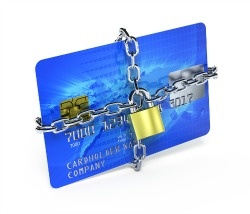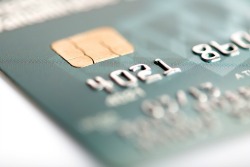Avoid These Common Mistakes When it Comes to EMV and Your Members
 Two weeks ago, our blog "EMV: The Chargeback Liability Shift and How It Impacts Credit Unions" discussed in detail what credit unions need to know about the EMV chargeback liability shift coming in October 2015. This topic is generating a lot of interest and concern among credit unions and their members. Today, we are sharing a post from CO-OP Financial Services, a FLEX partner, that provides more informative detail on how to communicate EMV to your members:
Two weeks ago, our blog "EMV: The Chargeback Liability Shift and How It Impacts Credit Unions" discussed in detail what credit unions need to know about the EMV chargeback liability shift coming in October 2015. This topic is generating a lot of interest and concern among credit unions and their members. Today, we are sharing a post from CO-OP Financial Services, a FLEX partner, that provides more informative detail on how to communicate EMV to your members:
EMV 101: You are Up to Speed. But are Your Members?
As credit unions roll out more and more new technology, bringing members up to speed is an escalating challenge. EMV is a case in point. With a liability shift scheduled for this October, many credit union card issuers are rolling out chip-enabled cards. Security-conscious consumers are primed for this change: Last year, the number one consumer complaint received by the FTC was identity theft. But just because your members want enhanced security doesn’t mean they’ll know how to use a new chip-enabled card. Some may not even realize their new EMV-ready card is different — or how.
No doubt you’re aware that EMV is being implemented on a massive scale. In fact, over 2 billion payment cards are chipped around the globe and by 2016, it is estimated that 500 million cards will be EMV-ready in the U.S. according to EMVCo. While a traditional magnetic stripe card is easily counterfeited by criminals, EMV technology is effective in combating this type of fraud through its dynamic authentication capabilities.
Although the benefits of EMV are clear, mainly enhanced security and fraud reduction, what makes them different and how they are used may require a slight adjustment for your members. For this reason, it will be important to provide practical education. For example, EMV enabled cards will look very similar to traditional cards, the key addition being the visible chip on the front. Without explanation, members may wonder what the EMV chip insignia means, or they may dismiss it as decoration. By the way, while it may appear to be an exposed microchip, the chip on the front of the card is actually a protective cover that is visible, not the actual chip.
You can ensure your customers “get” their new EMV capability by clearly explaining the new look and usage differences. Instead of swiping a card through a payment processor, an EMV card is inserted directly into the front of the card reader. The reader “holds” the card for a moment, then releases it back to the cardholder. The cardholder will follow the prompts which in some cases require a signature. Nothing changes for the cardholder when making a payment over the phone. During the transition to EMV, the familiar magnetic stripe will remain on cards so merchants that are not equipped for EMV can continue accepting payment.
Avoid These Common Mistakes
Credit union insiders have been talking about EMV for years. Your members have not. Help ease their transition by providing the information they need — and excluding the information they don’t:
- Keep intricate, detailed security language to a minimum. Instead, highlight visible and functional changes.
- Include a quick illustration of how an EMV card reader works, so members won’t be surprised by the new process — or attempt to wrestle with the technology when it holds onto their cards.
- Explain why there is a chip and also a magnetic stripe on new EMV cards, so members can feel confident using their cards everywhere.
- Educate members about why you’re making this change and what they can expect going forward.
Whether or not you provide adequate education — or even EMV cards themselves — most members will adapt to this new standard. After all, EMV terminals will be appearing at merchant locations in ever-increasing numbers. But helping your members “get” new features also helps them “get” your value as an ally in their financial well being. That’s a lesson not to be missed.



